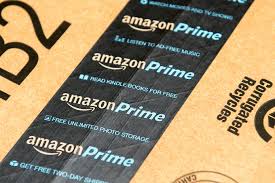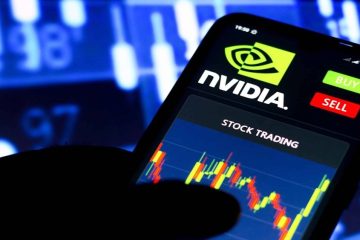A Big Red Flag Is Popping Up on Amazon Stock

Amazon vs. WalmartFor a little perspective on Amazon, let’s compare it to Walmart (WMT), which has made significant improvements to its online marketplaces and purchased Jet.com nearly a year ago. These investments have significantly increased e-commerce sales, but Amazon’s rival still has a long way to go to catch up. In Walmart’s most recent quarterly earnings report in May, the retailer reported an increase in e-commerce sales by 63% year over year. While this hasn’t changed the course of Amazon’s 20%-plus annual revenue growth, it does signal some resistance from a company that was first known for distribution.
Amazon’s market capitalization is currently $ 474 billion compared with Walmart’s $ 242 billion. Is Amazon worth twice as much as Walmart? I guess so, if you think Walmart’s future is in some historical retail trash heap. Amazon’s revenue and net income over the trailing 12 months are $ 150.12 billion and $ 1.92 billion respectively. Compare that to Walmart’s revenue of $ 487.51 billion and net income of $ 13.6 billion. The growth in aggregate U.S. retail sales does not average 20% growth from year to year.
Right now, Amazon’s sales growth is cannibalistic and has been helped by the slow online sales adoption of large retailers, and with its recent acquisition of Whole Foods (WFM), it appears that Amazon’s model is becoming a little more like Walmart’s every day. While Amazon may do it better than everyone else long into the future, the question is whether Amazon’s stock price is factoring in the eventual deceleration of its long-term revenue growth.
What is Amazon’s Chart Saying?
Now let’s turn our attention to the charts. The earnings and valuation may provide you with a little perspective about why it’s reasonable to take profits on Amazon, but the chart tells you more of what traders are actually doing.
Chart source: TradingView
When Amazon began its current uptrend last December, the trend was supported with higher volume up-days. Then in April, you can begin to see more profit-taking as the higher volume days occurred more frequently on down-days. Despite the higher volume down-days in April, the price trend stayed pretty steady. Then in June something changed again. Not only did the frequency of higher volume down-days increase, but the volatility of the stock’s price began to increase and was accentuated following the company’s most recent earnings report on July 27. With the most recent weakness, Amazon is currently testing its trendline that began last January.
In order to put the recent volume trends into perspective, there are technical indicators that can help you more easily see what’s happening to the price/volume trend and use it systematically. One indicator that is commonly used to identify divergences in price and volume trends is an indicator called On Balance Volume (OBV). This indicator is pretty simple to calculate. If the stock closes higher than the previous close, the volume is added to the indicator. If the stock closes below the previous close, it is subtracted. Therefore, the OBV value is a running total of the net of volume on up-days minus the volume on down-days. When using the indicator, the value itself isn’t that critical, but rather the trend of the indicator.
Since the beginning of June, you’ll notice that the OBV indicator has been trading in a horizontal channel as the price has continued its upward trend. On Aug. 3, the OBV dipped slightly below the lows of June and July. What the OBV trend is saying is that the volume trend isn’t confirming the price trend.
The Bottom Line
The debate over whether Amazon will, in fact, take over the retail world will continue to rage on. Whether it ultimately achieves that goal or not doesn’t mean you won’t continue to see profit-taking along the way. While the chart signals don’t mean Amazon will sell off dramatically, they do point to the potential for a larger correction if Amazon’s price and OBV were to break their lower trendlines.










